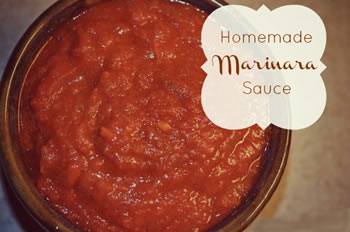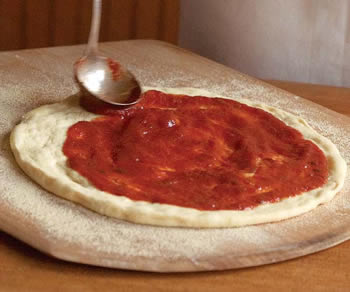Difference between Marinara and Pizza Sauce
Key Difference: Marinara sauce refers to a particular sauce, whereas technically a pizza sauce can be any sauce that is put onto a pizza. The marinara sauce is cooked and reduced into a thick paste like tendency, while the pizza sauce is actually uncooked.
 Some people are born chefs, while for others cooking is equivalent to chemistry. No matter what category you fit into, chances are you have had some confusion regarding cooking terms. Some of the most confusing things are sauces. Why are there so many? One such confusion exists between marinara sauce and pizza sauce. Aren’t they the same? Actually, they are not.
Some people are born chefs, while for others cooking is equivalent to chemistry. No matter what category you fit into, chances are you have had some confusion regarding cooking terms. Some of the most confusing things are sauces. Why are there so many? One such confusion exists between marinara sauce and pizza sauce. Aren’t they the same? Actually, they are not.
Many people mistakenly think that marinara sauce and pizza sauce are the same. However, marinara sauce refers to a particular sauce, whereas technically a pizza sauce can be any sauce that is put onto a pizza. Still, the term primarily refers to a tomato based sauce that is commonly used on pizzas.
Furthermore, marinara sauce is actually more versatile than pizza sauce. It can be used with multiple pastas, or as a dipping sauce, or even on a pizza. Whereas, the pizza sauce is primarily only used on pizzas.
Additionally, depending on the traditional recipes, the marinara sauce is cooked and reduced into a thick paste like tendency, while the pizza sauce is actually uncooked. Traditionally, the pizza sauce was just grinded tomato paste that was sparsely seasoned. The sauce would actually cook in the oven as part of the pizza. However, today many variations exist. Some even require the sauce to be cooked and reduced. Some pizza sauces are thicker, while some are thinner. Some are barely seasoned to others that include dozens of spices. Still the common pizza sauce mainly remains the same. In fact, many pizzerias use the tinned commercial pizza sauce.
Overall, the marinara sauce tends to be more complex in flavor than the simpler pizza sauce. When the marinara is used in a dish, it shines. The marinara sauce tends to be the highlight of the dish, whereas the pizza sauce is used as a base ingredient in the pizza. Here the highlight is the crust of the pizza, and it is the job of the pizza sauce to highlight and support the crust.

Also, by comparison the marinara can be thinner than the pizza sauce, even though it has been reduced while a pizza sauce is often not. The reason the pizza sauce needs to be thick is that a thin sauce will run. There is also the risk that it will ruin the crust by making it soggy.
While both the sauces are different, there have been many cases where they have been used interchangeably, more commonly by home cooks than professionals, but it is not unheard of in the chef community. Using a marinara sauce on a pizza, just gives it a bit more different and complex flavor. In fact, as a pizza sauce by definition is any sauce put on a pizza, then if you use a marinara sauce on a pizza, then it becomes a pizza sauce.
Comparison between Marinara and Pizza Sauce:
|
|
Marinara Sauce |
Pizza Sauce |
|
Uses |
Pizza, Pasta, Dipping Sauce, and many more. |
Pizza |
|
Cooked |
Cooked |
Often uncooked but can be cooked as well. |
|
Texture |
Chunky |
Variable. Can be chunky or smooth. |
|
Complexity |
Much complex. Based on the chef’s preference. |
Simpler. Just tomato and few spices. |
|
Importance |
Highlight of the dish |
Highlights the main ingredient, which is usually the crust. |
|
Thickness |
Thinner by comparison |
Usually thick, as a thin sauce would run and ruin the crust by making it soggy. |
Image Courtesy: adelightfulhome.com, finecooking.com









Add new comment